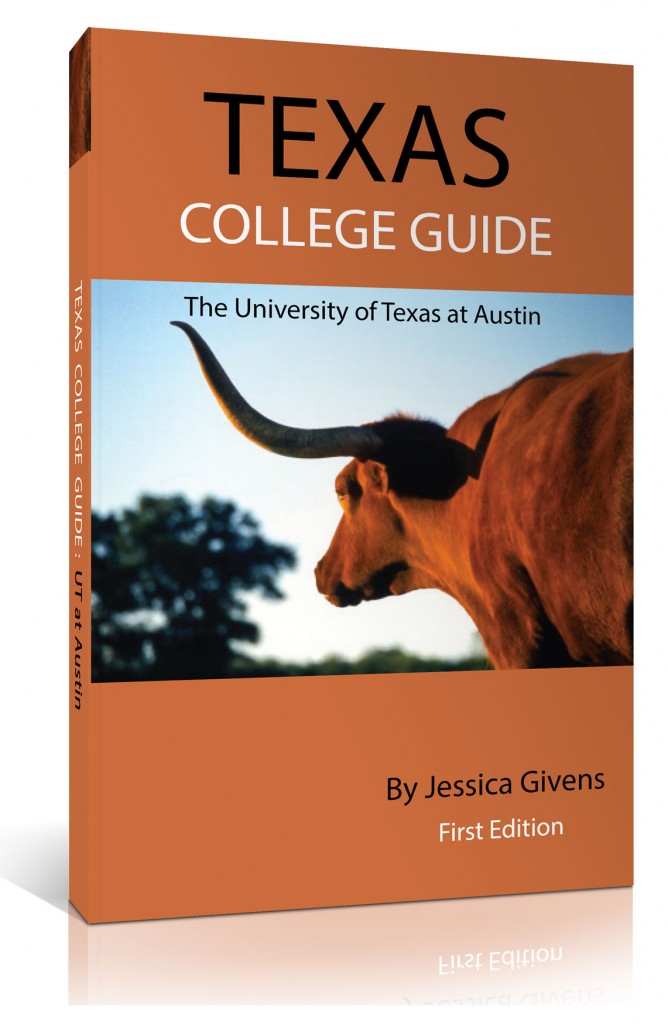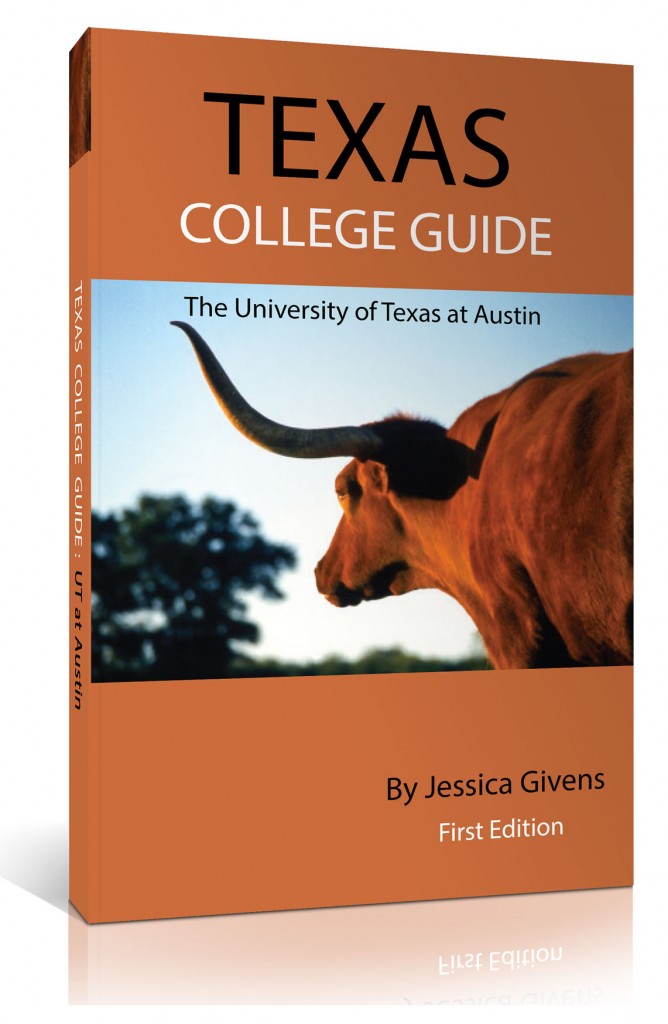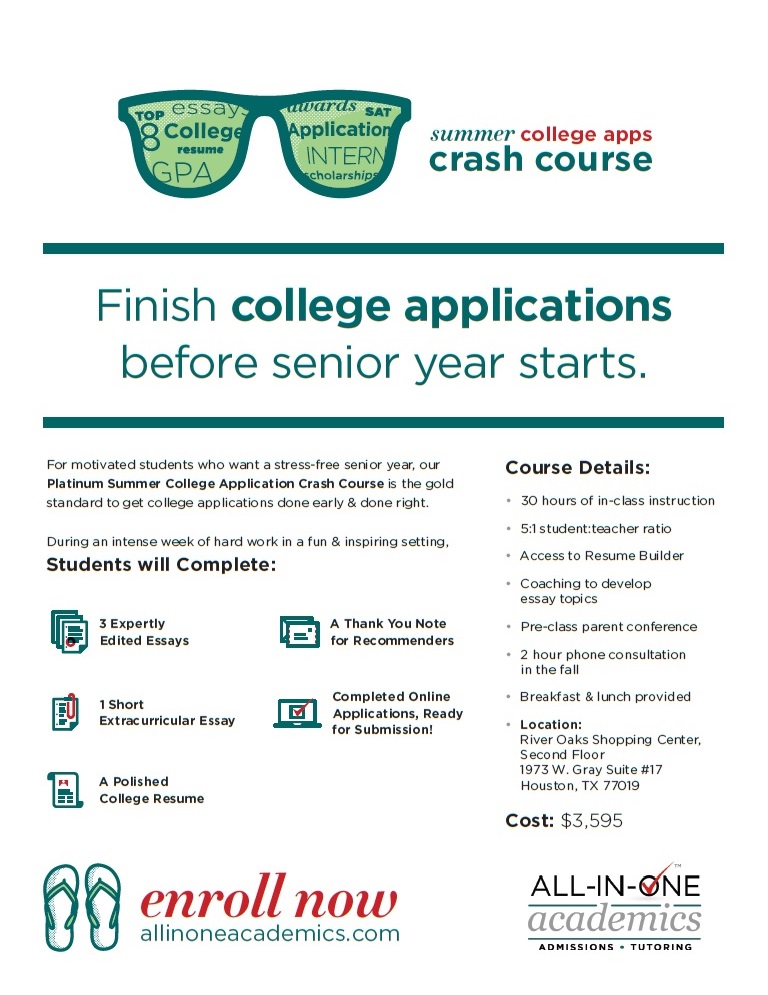CLICK HERE to sign up for our Newsletter!
call us 713-405-1193
call us 713-405-1193
Blog
Where to Buy Texas College Guide: The University of Texas at Austin Locally
July 03, 2014
by All-in-One Academics
0 Comment
We’ve had a great response so far to Jessica’s new book, Texas College Guide: The University of Texas at Austin. Now, in addition to it being available on Amazon, it is also available at a selection of bookstores and gift shops in the Houston area. Below is the current list and we will update it every few weeks as it changes. Additionally, if you’re interested in carrying the book, send us an email at info@allinoneacademics.com
Bella Madame Salon
2628 Chestnut Ridge Road, Kingwood, TX 77339
281-703-2679
14532 Memorial Drive, Houston, TX 77079
281-497-8675
The Book Nook
5022 Highway 90A Suite J, Sugar Land, TX 77498
281-265-9886
Katy Budget Books
2450 Fry Road, Katy, TX 77084
281-578-7770
Out of the Box
5709 Woodway Drive, Houston, TX 77057
832-252-6222
The Villager Gift Shop
9311 Katy Freeway Suite B, Houston, TX 770024
713-461-2022
New This Summer: Silver Application Package
We filled all of our Platinum College Application Crash Courses this year in record time – which was fantastic! But we were still getting a lot of inquiries from students and parents once the classes were full. We came up with a whole new program to offer this summer: the Silver Summer Application Package! The goal of these courses is to set aside a number of hours in the summer to really focus and work on the college applications. Here’s what’s included:
12 hours of one-on-one application consulting
8 hours of resume and essay editing
Students will finish with one polished, targeted college essay plus three creative, original 500-word essays
The 12 hours are designed to be run for 3 hours per day over 4 consecutive days. Although some modifications may be made, these prolonged sessions are critical to fostering communication and trust between the admissions consultant and the student. For more information, or to sign up, please click here.
The cost for this program is $1,875.
This is a great way to get a head start on senior year!
This Saturday: Free Test Prep Information Session
Everyone looks forward to relaxing in the summer – but there are some things that shouldn’t be left to flutter around in the summer breezes. What are we talking about? Test prep! Join us on Saturday, May 31st and hear from our senior test prep instructor, Errolynn Zetar, on why summer is a great time for test prep. She’ll share some tips, answer questions, and tell you about different summer options that are available.
Errolynn Zetar / All-in-One Academics
Summertime Test Prep Info Session
Saturday, May 31st from 11:00am – 12:00pm
at
All-in-One Academics Offices
River Oaks Shopping Center, Second Floor
Here are two quick tips from Errolynn to give you a taste of what she will be talking about:
- “Summer test prep allows the student to work on vocabulary without having to worry about it mixing in with their school work – it is easier to learn more words.”
- “Free time in the summer allows students to take more practice tests. Taking full-length practice tests is imperative. Students need to practice timing and increase their stamina and summer leaves more time to do that.”
Space is limited so please let us know if you’ll be attending. To RSVP, send an email to may@allinoneacademics.com or call 713.405.1193. We hope to see you there!
Texas College Guide: The University of Texas at Austin – Now Available!
 We are really excited about this new book – Texas College Guide: The University of Texas at Austin. Jessica decided last summer to sit down and write a book about everything she has learned about applying to UT from her years of experience. She was also able to collect information directly from the University and its various schools to pull together all of the information Texans need to understand the system and plan for success. Here is more about why she wrote the book:
We are really excited about this new book – Texas College Guide: The University of Texas at Austin. Jessica decided last summer to sit down and write a book about everything she has learned about applying to UT from her years of experience. She was also able to collect information directly from the University and its various schools to pull together all of the information Texans need to understand the system and plan for success. Here is more about why she wrote the book:
“After years of working with students and achieving a very high success rate of helping students gain admission to UT Austin, I have seen that a proven track record of involvement and focus in a given area can provide students with a real edge in admission to UT, and I’ve really had it with deception and subterfuge. UT applicants – you or your kids or your grandkids – are real people with meaningful histories and experiences that merit an honest and comprehensive display. However, you also deserve to understand what makes an applicant competitive for a given major, so that you don’t waste your major selection on choices that are absurd long shots. Next, you need to understand how the majors are different, what types of careers they cultivate, and what sorts of job and income prospects you’ll have after graduation. Finally, you need to know the other options that exist for paving a pathway to the University of Texas at Austin, because a rejection letter as an incoming freshman is not the end of the world, nor is it the end of the story. And, that’s why I’ve written this book, to give you the information you need and to prevent you from falling victim to shysters in this dodgy day and age of admissions chicanery. Additionally, I’ve fact-checked every aspect of my work with the University of Texas, combing their website for content and keeping in close contact with admissions and various UT departments. This book is a one-stop reference for UT major selection and admissions.”
We hope that students (and their parents) enjoy this book and feel informed about the admission process at UT. And if you are a prospective Aggie: don’t worry, this book is the first in what will be a series!
Click here to read more about the book on our website.
or
Click here to buy the book on Amazon.
Hear from Crash Course Parents
We’re gearing up for another busy summer of College Application Crash Courses. A few weeks ago, we took some time to chat with some of last year’s Crash Course parents to hear what they had to say about their experience. Here’s a video of what they had to say:
Thanks to all of the parents who shared their experiences! And if you’re interested in learning more about the courses or enrolling for this summer, click here. But hurry! There are only a handful of spots left.
Free College Admissions Information Session
We hope everyone is enjoying this fantastic Spring weather – but we all know the truth: summer will be here soon. Before you get swallowed up in end of the school year activities and summer vacation planning – join us for a free college admissions information session! On Saturday, May 3rd, our president, Jessica Givens, will be delivering her engaging and informative presentation “Five Secrets to College Admissions Gold” at our office on West Gray.
Too many parents, students and counselors are operating with out-dated assumptions about what works and are blind-sided by often-avoidable rejection letters. Join us to learn about how to navigate the ever-changing college admissions process. This session is geared toward parents of students between eighth and eleventh grade but anyone is welcome.
Jessica Givens / All-in-One Academics
Five Secrets to College Admissions Gold
Saturday, May 3rd from 12:00pm – 1:00pm
River Oaks Shopping Center, Second Floor
1973 W. Gray Suite #17 Houston, TX 77019
We have had a great response to this presentation in years past – please join us! The information session will also include a brief discussion about our upcoming College Application Crash Courses for high school juniors. Space is limited so please let us know if you’ll be attending. To RSVP, send an email to may@allinoneacademics.com or call 713.405.1193. We hope to see you there!
Summer College Application Crash Courses
Juniors! Summer will be here before you know and you know what that means… it’s time to start your college applications! And also… finish them? Yes! Our College Application Crash Courses bring together a small group of motivated students for 5 days during the summer and together the group knocks out the major written components of their college applications including three essays and a resume. Additionally, for those taking the course in August, they’ll be able to fill out the actual application as well (we added classes in July due to demand but the application doesn’t come out until August 1!). Here are some additional details:
Interested? Then get a move on! Spots are filling up quickly. Click here to read more about what happens in class or to enroll. This is a fantastic way to get a huge head start on your applications leading to a significantly less stressful senior year for you and your entire family! Plus, it’s fun!
Jessica Givens on Great Day Houston
Our president, Jessica Givens, was recently featured as a College Coach on KHOU’s morning program, Great Day Houston. She was there on Monday, February 17th to help them kick off their college week. See the clip in full here:
Thanks so much for having Jessica on the show again – it is always a good time!
Cool Opportunity: Gap Year Fair at Episcopal HS!
We wanted to share some information about a cool opportunity coming up at Episcopal High School on February 24th: the HoustonGap Year Fair. This event is open to anyone in the Houston area and is a great way to get more information about different programs, what to expect, and how to tell who might be a good fit to take a gap year. Some students just aren’t ready to head straight to college and a structured gap year can help them to mature, gain additional experience, and start college on the right foot a year later.
Here’s all the information about the fair:
Houston Gap Year Fair
Monday, February 24, 2014
6:30 to 8:30 p.m.
*Speaker at 6 p.m in Anderson Lecture Hall.
Traditional fair to follow in the Underwood Student Center
Episcopal High School
4650 Bissonnet St., Bellaire, TX 77401
A Gap Year is a period of time between completing high school and beginning college when a student steps outside the traditional classroom experience. This is a time to explore the world, reflect on personal values and goals, and prepare to take the next step in life.
Please register at www.usagapyearfairs.org.
If you’re considering a gap year or just a little curious, we hope you’ll attend!
Copyright 2022 , All-in-One Academics
info@allinoneacademics.com


